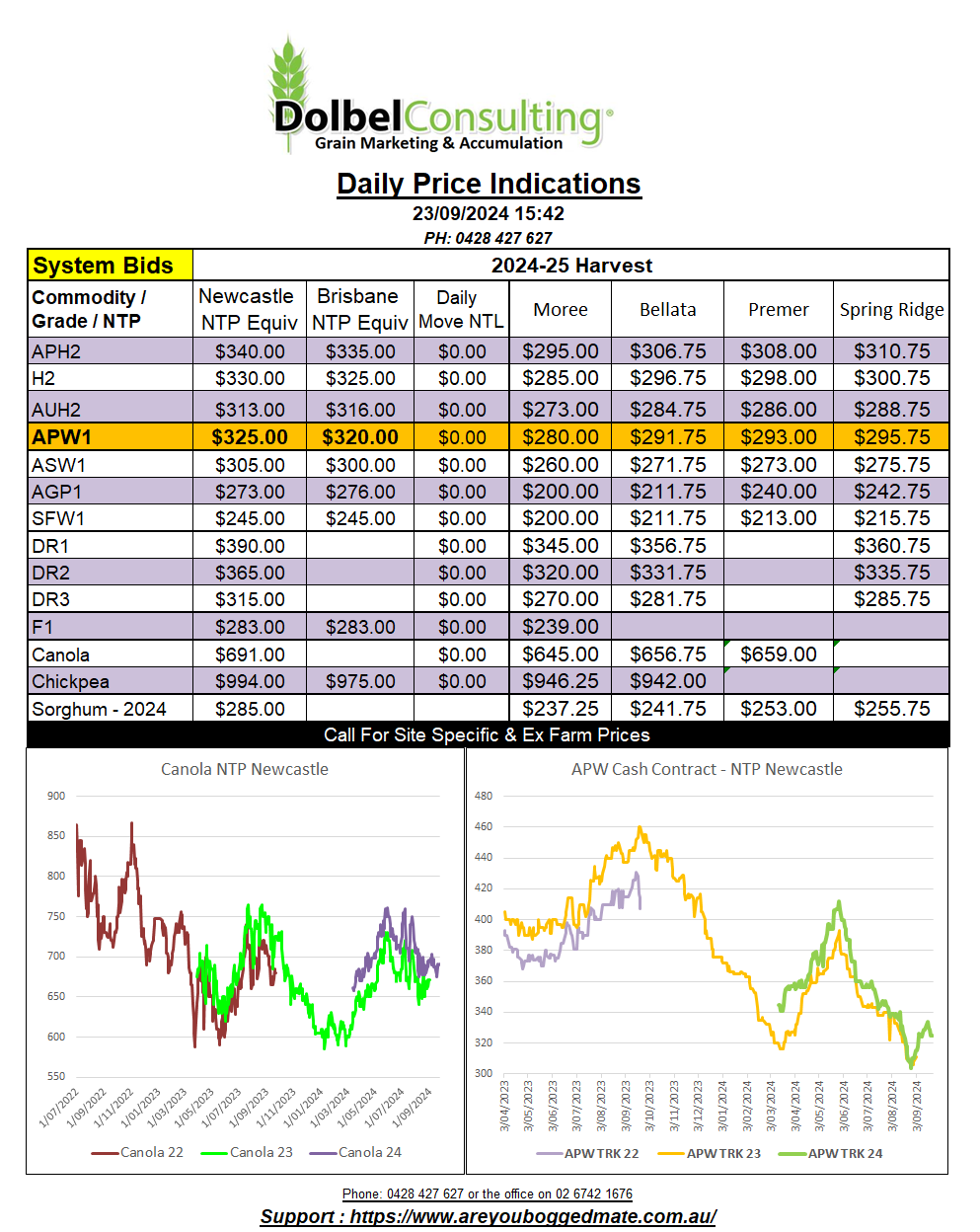23/9/24 Prices

The Australian wheat crop is seeing revisions lower for the first time in months. Frost damage to southern districts in NSW, Victoria, South Australia and Western Australia has seen private estimates fall from the previous weeks high. Some locations falling as much as 30%. Frost damage is hard to quantify and we may not see the true extent of the damage from last frost event until next week. With temperatures dropping below -5C in many locations across S-NSW, during a crucial growth phase, it is not out of the question we could see the loses creep into the many hundreds of thousands of tonnes for wheat alone.
The International Grains Council has joined the list of forecasters to reduce global wheat production this month. Now estimated at 798mt, 1mt below last month’s estimate. This may not be the end to the reductions in world wheat production though. Dry weather in Argentina, now at a crucial growth phase, wet weather at the start of the Brazilian wheat harvest, frost damage in Australia and continued wet weather in Siberia are all likely to assist in lowering global wheat production estimates in the coming months.
US wheat futures struggled to take on board the growing positivity in global wheat fundamentals. Kansas HRWW futures and MGEX spring wheat futures struggled, closing close to unchanged but lower. Paris milling wheat futures closed higher, up just €0.25/t in the Dec24 slot, not very convincing. Oilseeds were mixed, Chicago soybeans a little lower, Paris rapeseed a little lower and Winnipeg canola crept higher. Winnipeg canola continues to trade in denial of the what the Chinese import ban may do to carry over stocks in Canada. As long as Winnipeg moves higher, Canadian growers may well consider a nearby weighted marketing program, leaving the Chinese issue to the trade to handle in 2025.
Dry weather continues to hinder sowing progress of winter wheat in Russia, analyst there now expecting to see a year on year decline in area sown to wheat.
